编程高手 实例解析C++/CLI之代理与事件
在C++/CLI中,代理是对函数进行包装的对象;而事件是一种为客户程序提供通知的类机制。
在前几篇文章中,已经多次演示了如果让一个句柄在不同的时间,被引用至不同的对象,从而以更抽象的方法来解决程序中的问题,但是,也能使用代理通过函数来达到同样的效果;代理是包装了函数的一个对象,且对实例函数而言,也能通过特定的实例,与这些函数发生联系。一旦一个代理包装了一个或多个函数,你就能通过代理来调用这些函数,而无须事先了解包装了哪些函数。
请看例1中的代码,在标号1中,定义一个代理类型Del,由于使用了上下文关键字delegate,所以有点像函数的声明,但与函数声明不同的是,此处声明的是一个代理类型Del的实例,其可包装进任意接受一个int类型作为参数并返回一个int值类型的函数(任意有效的参数列表及返回类型组合都是允许的)。一旦定义了某种代理类型,它只能被用于包装具有同样类型的函数;代理类型可被定义在源文件中或命名空间的范围内,也能定义在类中,并可有public或private访问控制属性。
例1:
| using namespace System; ref struct A { static int Square(int i) { return i * i; } }; ref struct B { int Cube(int i) { return i * i * i; } }; /*1*/ delegate int Del(int value); int main() { /*2*/ Del^ d = gcnew Del(&A::Square); /*3*/ Console::WriteLine("d(10) result = {0}", d(10)); /*4*/ B^ b = gcnew B; /*5*/ d = gcnew Del(b, &B::Cube); /*6*/ Console::WriteLine("d(10) result = {0}", d(10)); } |
静态函数A::Square与实例函数B::Cube对Del来说,都具有相同的参数类型及返回类型,因此它们能被包装进同类型的代理中。注意,即使两个函数均为public,当考虑它们与Del的兼容性时,它们的可访问性也是不相关的,这样的函数也能被定义在相同或不同的类中,主要由程序员来选择。
一旦定义了某种代理类型,就可创建此类型实例的句柄,并进行初始化或赋值操作,如标号2中所示的静态函数A::Square,及标号5中所示的实例函数B::Cube。(此处只是出于演示的目的,否则把Cube做成实例函数没有任何好处。)
创建一个代理实例涉及到调用一个构造函数,如果是在包装一个静态函数,只需传递进一个指向成员函数的指针;而对实例函数而言,必须传递两个参数:一个实例的句柄及指向实例成员函数的指针。
在初始化代理实例之后,就能间接地调用它们包装的函数了,用法与直接调用原函数一样,只不过现在用的是代理实例名,如标号3与6,由包装函数返回的值也是像直接调用函数时那样获得。如果一个代理实例的值为nullptr,此时再试图调用被包装的函数,会导致System::NullReferenceException类型异常。
以下是输出:
| d(10) result = 100 d(10) result = 1000 |
传递与返回代理
有时,把包装好的函数传递给另一个函数,会非常有用,接受一方的函数并不知道会传递过来哪个函数,并且它也无须关心,只需简单地通过包装好的代理,间接调用此函数就行了。
下面以集合中元素排序来说明,大多数时候,集合中元素排序所依据的规则,只在对某对元素进行比较的方法上存在区别。如果在运行时提供进行比较的函数,一个排序过程就能用相应定义的比较函数排出任意的顺序,请看例2。
例2:
| using namespace System; ref struct StrCompare { static int CompareExact(String^ s1, String^ s2) { Console::WriteLine("Comparing {0} and {1} " "using CompareExact", s1, s2); // ... return 0; } static int CompareIgnoreCase(String^ s1, String^ s2) { Console::WriteLine("Comparing {0} and {1}" "using CompareIgnoreCase", s1, s2); // ... return 0; } }; delegate int Compare(String^ s1, String^ s2); /*1*/ Compare^ FindComparisonMethod() { // ... } void Sort(Compare^ compare) { int result; /*3*/ result = compare("Hello", "Hello"); /*4*/ result = compare("Hello", "HELLO"); /*5*/ result = compare("Hello", "Hell"); } int main() { /*6*/ Sort(gcnew Compare(&StrCompare::CompareIgnoreCase)); /*7*/ Sort(FindComparisonMethod()); /*8*/ FindComparisonMethod()("Red", "RED"); } |
Compare代理类型可对任意接受两个String^参数并返回一个int结果的函数进行包装,在此,有两个函数为StrCompare::CompareExact和StrCompare::CompareIgnoreCase。
在标号6中,创建了一个Compare代理类型的实例,用它来包装StrCompare::CompareIgnoreCase,并把此代理句柄传递给Sort函数,其将会利用比较函数进一步进行处理。
正如大家所看到的,Sort可接受一个代理类型的参数--而此参数可像其他函数参数一样,可为传值、传址、传引用。
在标号7中,调用了FindComparisonMethod函数,其返回一个Del代理类型,接着在标号7及8中调用了包装过的函数。此处要重点说一下标号8:首先,FindComparisonMethod函数是被调用来获取代理实例--其常用于调用底层函数;其次,这两个函数的调用操作符都有同等的优先级,所以它们从左至右调用。
FindComparisonMethod函数中也用了一些逻辑用于确定到底需要包装哪个函数,此处就未作详细说明了。
代理类型的兼容性
一个代理类型只与它自身相兼容,与其他任何代理类型都不兼容,即使其他类型的包装函数均为同一类型。请看例3,非常明显,代理类型D1与函数A::M1与A::M2兼容,代理类型D2也与这些函数兼容,然而,这两个代理类型在标号5、6、8、9中并不能互换使用。
例3:
| delegate void D1(); delegate void D2(); public struct A { static void M1() { /* ... */ } static void M2() { /* ... */ } }; void X(D1^ m) { /* ... */ } void Y(D2^ n) { /* ... */ } int main() { D1^ d1; /*1*/ d1 = gcnew D1(&A::M1); //兼容 /*2*/ d1 = gcnew D1(&A::M2); //兼容 D2^ d2; /*3*/ d2 = gcnew D2(&A::M1); //兼容 /*4*/ d2 = gcnew D2(&A::M2); //兼容 /*5*/ d1 = d2; //不兼容 /*6*/ d2 = d1; //不兼容 /*7*/ X(d1); //兼容 /*8*/ X(d2); //不兼容 /*9*/ Y(d1); //不兼容 /*10*/ Y(d2); //兼容 } |
代理类型的合并
一个代理实例实际上能包装多个函数,在这种情况下,被包装的函数集被维护在一个调用列表中,当合并两个代理实例时,它们的调用列表也以指定的顺序连接起来,并产生一个新的列表,而现有的两个列表并没有发生改变。当从调用列表中移除一个或多个函数时,也会产生一个新的列表,且原始列表不会发生变化。请看例4中的代码,每个函数调用后的输出都写在相应函数后。
例4:
| using namespace System; delegate void D(int x); ref struct Actions { static void F1(int i) { Console::WriteLine("Actions::F1: {0}", i); } static void F2(int i) { Console::WriteLine("Actions::F2: {0}", i); } void F3(int i) { Console::WriteLine("instance of Actions::F3: {0}", i); } }; int main() { /*1*/ D^ cd1 = gcnew D(&Actions::F1); //包含F1的调用列表 cd1(10); Actions::F1: 10 /*2*/ D^ cd2 = gcnew D(&Actions::F2); //包含F2的调用列表 cd2(15); Actions::F2: 15 /*3*/ D^ cd3 = cd1 + cd2; //包含F1 + F2的调用列表 cd3(20); Actions::F1: 20 Actions::F2: 20 /*4*/ cd3 += cd1; //包含F1 + F2 + F1的调用列表 cd3(25); Actions::F1: 25 Actions::F2: 25 Actions::F1: 25 Actions^ t = gcnew Actions(); D^ cd4 = gcnew D(t, &Actions::F3); /*5*/ cd3 += cd4; //包含F1 + F2 + F1 + t->F3的调用列表 cd3(30); Actions::F1: 30 Actions::F2: 30 Actions::F1: 30 instance of Actions::F3: 30 /*6*/ cd3 -= cd1; //移除最右边的F1 cd3(35); //调用F1、F2,t->F3 Actions::F1: 35 Actions::F2: 35 instance of Actions::F3: 35 /*7*/ cd3 -= cd4; //移除t->F3 cd3(40); //调用F1、F2 /*8*/ cd3 -= cd1; //移除F1 cd3(45); //调用F2 /*9*/ cd3 -= cd2; //移除F2,调用列表现在为空 /*10*/Console::WriteLine("cd3 = {0}", (cd3 == nullptr ? "null" : "not null")); } Actions::F1: 40 Actions::F2: 40 Actions::F2: 45 cd3 = null |
代理可通过 + 和 += 操作符来合并,如标号3、4中所示。两个单入口列表会连接成一个新的双入口列表,以先左操作数,后右操作数的顺序。新的列表被cd3引用,而现有的两个列表并未改变。在此要注意的是,不能合并不同类型的代理。
正如在标号4中所见,同一个函数可在一个调用列表中包装多次;而在标号5中,也说明了一个调用列表能同时包含类与实例函数。代理可通过 - 或 -= 操作符移除,如标号6中所示。
当同一个函数在调用列表中出现多次时,一个对它的移除请求会导致最右边的项被移除。在标号6中,这产生了一个新的三入口列表,其被cd3引用,且前一个列表保持不变(因为先前被cd3引用的列表现在引用计数为零,所以会被垃圾回收)。
当一个调用列表中的最后一项被移除时,代理将为nullptr值,此处没有空调用列表的概念,因为,根本就没有列表了。
例5中演示了另一个代理合并与移除的例子,正如标号3a与3b中所示,两个多入口调用列表是以先左操作数,后右操作数的顺序连接的。
如果想移除一个多入口列表,只有当此列表为整个列表中严格连续的子集时,操作才会成功。例如,在标号4b中,你可以移除F1和F2,因为它们是相邻的,对标号5b中的两个F2及标号6b中的F1、F2来说,道理也是一样的。但是,在标号7b中,列表中有两个连续的F1,所以操作失败,而结果列表则是最开始的列表,它包含有4个入口。
例5:
| using namespace System; delegate void D(int x); void F1(int i) { Console::WriteLine("F1: {0}", i); } void F2(int i) { Console::WriteLine("F2: {0}", i); } int main() { D^ cd1 = gcnew D(&F1); D^ cd2 = gcnew D(&F2); /*1*/ D^ list1 = cd1 + cd2; // F1 + F2 /*2*/ D^ list2 = cd2 + cd1; // F2 + F1 D^ cd3 = nullptr; /*3a*/ cd3 = list2 + list1; // F2 + F1 + F1 + F2 cd3(10); /*3b*/ cd3 = list1 + list2; // F1 + F2 + F2 + F1 cd3(20); /*4a*/ cd3 = list1 + list2; // F1 + F2 + F2 + F1 /*4b*/ cd3 -= cd1 + cd2; // F2 + F1 cd3(30); /*5a*/ cd3 = list1 + list2; // F1 + F2 + F2 + F1 /*5b*/ cd3 -= cd2 + cd2; // F1 + F1 cd3(40); /*6a*/ cd3 = list1 + list2; // F1 + F2 + F2 + F1 /*6b*/ cd3 -= cd2 + cd1; // F1 + F2 cd3(50); /*7a*/ cd3 = list1 + list2; // F1 + F2 + F2 + F1 /*7b*/ cd3 -= cd1 + cd1; // F1 + F2 + F2 + F1 cd3(60); } |
System::Delegate
代理类型的定义,会隐式地创建一个对应的类(class)类型,并且所有的代理类型均从类库System::Delegate继承而来。要定义一个这样的类,唯一的方法就是通过delegate上下文关键字。代理类为隐式的sealed,因此它们不能被用作基类。另外,一个非代理类也不能从System::Delegate继承。
例6演示了几个Delegate函数的用法:
例6:
| using namespace System; delegate void D(int x); ref class Test { String^ objName; public: Test(String^ objName) { this->objName = objName; } void M(int i) { Console::WriteLine("Object {0}: {1}", objName, i); } }; void ProcessList(D^ del, int value, Object^ objToExclude); int main() { /*1*/ Test^ t1 = gcnew Test("t1"); D^ cd1 = gcnew D(t1, &Test::M); /*2*/ Test^ t2 = gcnew Test("t2"); D^ cd2 = gcnew D(t2, &Test::M); /*3*/ Test^ t3 = gcnew Test("t3"); D^ cd3 = gcnew D(t3, &Test::M); /*4*/ D^ list = cd1 + cd2 + cd3 + cd2; /*5a*/ ProcessList(list, 100, nullptr); /*5b*/ ProcessList(list, 200, t1); /*5c*/ ProcessList(list, 300, t2); /*6a*/ D^ cd4 = cd1 + cd2; /*6b*/ D^ cd5 = (D^)cd4->Clone(); /*6c*/ ProcessList(cd4, 5, nullptr); /*6d*/ ProcessList(cd5, 6, nullptr); } void ProcessList(D^ del, int value, Object^ objToExclude) { /*7*/ if (del == nullptr) { return; } /*8*/ else if (objToExclude == nullptr) { del(value); } else { /*9*/ array<Delegate^>^ delegateList = del->GetInvocationList(); for each (Delegate^ d in delegateList) { /*10*/ if (d->Target != objToExclude) { /*11*/ ((D^)d)(value); } } } } |
实例函数Test::M与代理类型D相兼容,当调用时,这个函数只是识别出它调用的对象,并带有一个整数参数。
在标号1、2、3中,定义了三个Test类型的对象,并把它们各自与实例函数Test:M包装在单独的代理类型D中。接着,在标号4中,创建了一个四入口的调用列表。
倘若传递进来的调用列表不为空,ProcessList函数将调用在列表中除了特定对象以外的所有函数,例如,在标号5a中,没有排除任何入口,因此所有的函数都会被调用;在标号5b中,t1被排除在外,而标号5c中,与对象t2有关的两个入口都被排除了,结果输出如下:
| Object t1: 100 Object t2: 100 Object t3: 100 Object t2: 100 Object t2: 200 Object t3: 200 Object t2: 200 Object t1: 300 Object t3: 300 |
在标号6b中,调用了Clone创建了代理cd4的一个副本,这个函数返回一个Object^,因此,要把它转换成D^类型。当原始及克隆的代理在标号6c、6d中调用时,结果输出如下:
| Object t1: 5 Object t2: 5 Object t1: 6 Object t2: 6 |
关于函数ProcessList,如果参数中的代理实例为nullptr,即没有调用列表,那它将直接返回;如果排除的对象为nullptr,那么列表中所有的函数都将被调用;如果存在要排除的对象,就要像标号8中那样把调用列表当作代理数组取出,接着,在标号9中逐个排查不相符的入口,最后,在标号10中调用余下的这些函数。尽管在调用列表中每个入口都是Del类型,但GetInvocationList返回一个基类Delegate数组,所以在调用每个代理实例之前,需像标号10那样先转换成类型D。
事件
在C++/CLI中,事件是一种当某种重要事情发生时,为客户程序提供通知的机制。鼠标单击就是事件的一个典型例子,在事件发生之前,有关的客户程序必须先注册它们感兴趣的事件,如,当检测到鼠标单击时,这些程序就会接到通知。
通过添加或删除一个或多个感兴趣的事件,事件列表可在运行时增长或缩减,请看例7中Server类型的定义,在标号1中,Server类定义了代理类型NewMsgEventHandler(一般约定在用于事件处理时,代理类型添加EventHandler的后缀名),接着,在标号2中,定义了一个名为ProcessNewMsg的公共事件(event在此为一个上下文关键字)。一个事件必须有一个代理类型,实际上,像这样的一个事件已经是一个代理实例了,而且因为它被默认初始化为nullptr,所以它没有调用列表。
例7:
| using namespace System; public ref struct Server { /*1*/ delegate void NewMsgEventHandler(String^ msg); /*2*/ static event NewMsgEventHandler^ ProcessNewMsg; /*3*/ static void Broadcast(String^ msg) { if (ProcessNewMsg != nullptr) { ProcessNewMsg(msg); } } }; |
当通过一条消息调用时,函数Broadcast将调用包装在ProcessNewMsg调用列表中所有的函数。
Client类定义在例8中,一个Client的类型实例无论何时被创建,它都会通过向为Server::ProcessNewMsg维护的代理列表中添加一个实例函数(它关联到实例变量),来注册它所感兴趣的新Server消息,而这是通过 += 操作符来完成,如标号5中所示。只要这个入口一直保持在通知列表中,无论何时一个新消息送达Server,注册的函数都会被调用。
例8:
| using namespace System; public ref class Client { String^ clientName; /*4*/ void ProcessNewMsg(String^ msg) { Console::WriteLine("Client {0} received message {1}", clientName, msg); } public: Client(String^ clientName) { this->clientName = clientName; /*5*/ Server::ProcessNewMsg += gcnew Server::NewMsgEventHandler(this, &Client::ProcessNewMsg); } /*6*/ ~Client() { Server::ProcessNewMsg -= gcnew Server::NewMsgEventHandler(this, &Client::ProcessNewMsg); } }; |
要从通知列表中移除一个入口,可使用 -= 操作符,如标号6定义的析构函数中那样。
例9:
| using namespace System; int main() { Server::Broadcast("Message 1"); Client^ c1 = gcnew Client("A"); Server::Broadcast("Message 2"); Client^ c2 = gcnew Client("B"); Server::Broadcast("Message 3"); Client^ c3 = gcnew Client("C"); Server::Broadcast("Message 4"); c1->~Client(); Server::Broadcast("Message 5"); c2->~Client(); Server::Broadcast("Message 6"); c3->~Client(); Server::Broadcast("Message 7"); } |
例9是主程序,一开始,没有注册任何函数,所以当发送第一个消息时,不会获得任何通知。然而,一旦构造了c1,通知列表就包含了此对象的一个入口,而接下来c2与c3的构造使这个列表增长到3个入口。在这些对象消失时(通过显式调用析构函数),入口数也相应地减少了,直到最后,一个也不剩,因此当最后一条消息发出时,没有任何对象在监听。以下是输出:
| Client A received message Message 2 Client A received message Message 3 Client B received message Message 3 Client A received message Message 4 Client B received message Message 4 Client C received message Message 4 Client B received message Message 5 Client C received message Message 5 Client C received message Message 6 |
尽管3个对象均为同一类型,但这并不是必须的,只要定义的函数可与NewMsgEventHandler兼容,就能使用任意的类型。
上述例子中使用的事件只不过是微不足道的一个示例,另外要说明一点,与以前文章中说过的属性一样,此种类型的事件均以private属性自动备份,且自动生成添加(add)与移除(remove)存取程序,为自定义这些存取程序,就必须提供这些函数的定义,如例10中所示,名称add与remove在此为上下文关键字。
例10:
| public ref struct Server { // ... static event NewMsgEventHandler^ ProcessNewMsg { void add(NewMsgEventHandler^ n) { /* ... */ } void remove(NewMsgEventHandler^ n) { /* ... */ } } // ... }; |
| 欢迎访问最专业的网吧论坛,无盘论坛,网吧经营,网咖管理,网吧专业论坛
https://bbs.txwb.com
关注天下网吧微信/下载天下网吧APP/天下网吧小程序,一起来超精彩
|
本文来源:vczx 作者:佚名





 天下网吧 网吧天下
天下网吧 网吧天下

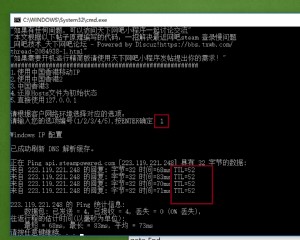

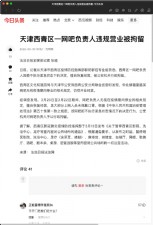
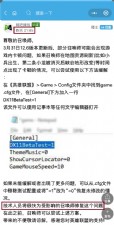


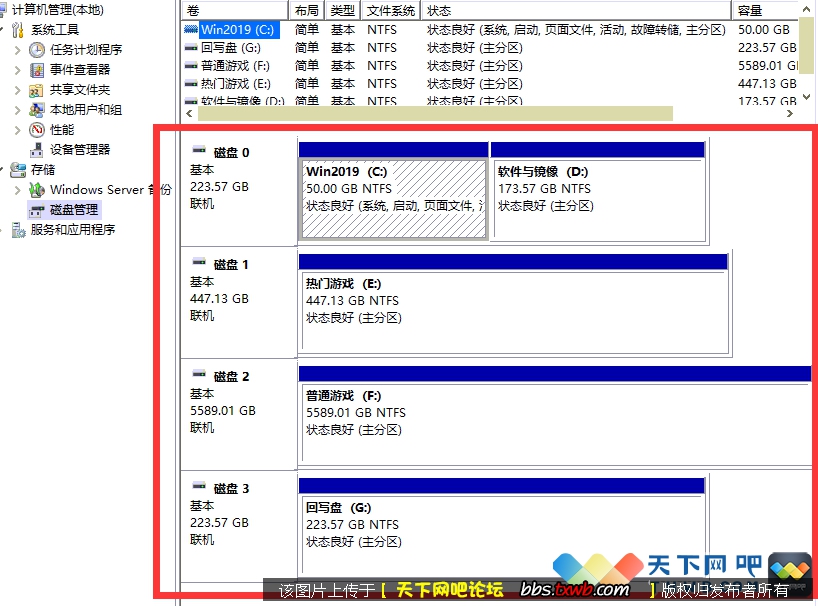

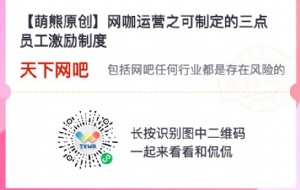
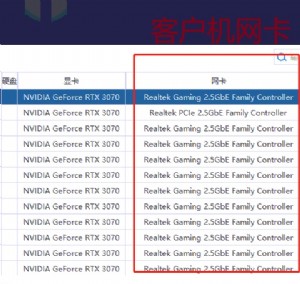


 闽公网安备35010202000238号
闽公网安备35010202000238号
